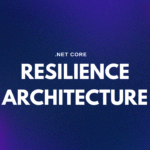One of the biggest challenges in software development is that technology never stands still. Frameworks change, programming languages evolve, and new tools come into the market every year. What we use today might not be relevant tomorrow.
This is why the separation of UI and API logic is not just a good practice — it’s almost a survival strategy. If you have this separation in place, any future migration or tech shift becomes far easier. Whether you’re moving from Angular to React, Java to .NET, or on-premises to cloud, having clean boundaries means you’re not stuck rewriting the entire product from scratch.
Over the years, I’ve seen projects fail not because the idea was bad, but because the architecture wasn’t planned with future change in mind. Thinking about migration and tech shifts during the initial planning of a project saves a lot of time, cost, and pain down the road.
Why Clean Architecture Matters
When you’re building a big project with multiple layers, clean architecture makes the difference between scaling smoothly and hitting a dead end.
The concept is simple: each layer should have its own set of responsibilities and should not depend heavily on other layers. For example:
- UI Layer → Only handles presentation and user interactions
- API Layer → Exposes services, independent of the UI
- Business Logic Layer → Holds the actual decision-making and processing rules
- Data Layer → Manages persistence and data retrieval
This separation ensures that if tomorrow you need to swap your frontend or shift databases, you don’t end up breaking everything. Each piece of the puzzle does its own job, and that makes the system flexible and maintainable.
Design Patterns and Principles in Real Life
I’m not talking about memorizing every design pattern from a book. I’m talking about using them in real projects where they make sense.
For example:
- Factory Pattern when object creation logic needs to be abstracted.
- Observer Pattern for real-time event-driven systems.
- Repository Pattern for database access that remains consistent even if the database changes.
Following SOLID principles and keeping code modular isn’t about sounding smart in interviews — it’s about making sure your teammates can read, understand, and extend your code without wanting to rewrite it.
The Developer’s Mindset
Here’s something I strongly believe: A developer is not just someone who writes code. A good developer thinks from multiple perspectives — designer, architect, business analyst, project manager, tester, and even client.
When you write code with only your developer hat on, you solve your problem. When you put on these other hats, you start solving everyone’s problem. That’s when projects succeed.
Most projects fail not at the code level but at the architecture and planning level. Poor architecture kills productivity. A team that spends more time fixing spaghetti code than building new features will never scale.
Solutions Over Problems
At the end of the day, we as developers are meant to provide solutions, not add problems.
Yes, AI or no AI, technology is just a tool. It’s the mindset of the developer that decides whether a product succeeds. When you design systems that are flexible, scalable, and built with the future in mind, you become a problem solver that everyone appreciates.
My Takeaway From 10+ Years
After working for more than a decade in software development, here’s my biggest learning:
A developer is appreciated the most when they become the solution to problems, not the cause of them.
You don’t need the fanciest tools or the newest frameworks to succeed. You need clean thinking, clean architecture, and the mindset of solving problems from every role’s perspective.
That’s what makes software survive tech shifts. That’s what makes projects succeed.
Thanks for reading








